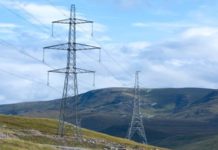UK Power Networks and Western Power Distribution are stepping up calls for industrial and commercial (I&C) companies with onsite generation and flexible consumption to help balance their regional power networks.
The distribution network operators (DNOs) outlined their plans at National Grid’s Power Responsive conference.
UKPN: Distributed generators can help solve problem they create

Sotiris Georgiopoulos, head of smart grid development at UKPN, said the company was starting to focus in earnest on recruitment of companies for its Power Potential project in the South East, focused primarily Kent and Sussex.
The aim is to create a market for flexibility that UKPN will manage and package up for National Grid while managing its own network constraints. It wants to prove that approach can deliver lower whole system balancing costs while maximising capacity on UKPN’s network, reducing overall customer costs – and enabling it to connect more distributed generation more cheaply.
The company operates a 400kV line that runs from the Thames Estuary down to Portsmouth, and Georgiopoulos said the zone “has the characteristics of small power system” accommodating nuclear, offshore wind, and significant volumes of solar PV.
“It is a dynamic system and an exporting region; in summer it has 1GW of demand versus 1.5GW of generation,” he said. UKPN, along with project partner National Grid, aim to create a market for both fast and slow reactive power on the network for voltage stability, and also active power and constraint management.
“We are trying to demonstrate how the DNO and system operator (SO) can work together to provide services to help mitigate those constraints, enabling us to connect more distributed generation in the region,” said Georgiopoulos. “We are asking [distributed generators] that are creating the issue to help solve it by creating a market.”
That market will give participants prices for taking actions to help balance the system and UKPN will step up engagement with aggregators and I&C firms in September, said Georgiopoulos. Over the coming months it aims to develop framework agreements with those firms “in readiness for service tendering or auctioning, which will happen closer to real time, some point next year”.
“Framework agreements do not commit people [to anything],” said Georgiopoulos, “but it gives us an understanding of their requirements and shows us [potential volumes] willing to participate in a trial.”
System design and testing will take place for most of next year in readiness for service launch in January 2019.
WPD: revenue stacking key to DSR
Western Power Distribution outlined further details of its DSR operation in the East Midlands, whereby it is “trying to understand how we can make DSR commercially viable for DNOs,” according to Matt Watson, Innovation and Low Carbon Networks Engineer at WPD.

Key to that goal, he said, was taking hassle away from providers and maximising the revenue streams they can stack. Otherwise, “you can have a commercially viable service, but if nobody signs up, it is of no use to anyone”.
DSR is not primary business for most companies, so simplification is key, said Watson.
“They don’t want myriad products, they want simple stuff. So we are looking at services that can stack revenues from different paths, how to engage effectively with customers and trying to create processes that are low on admin and which put the burden of complexity onto us.”
Constraint management is the key rationale, said Watson, and the company aims to notify participants to reduce power or increase generation with signals a week ahead of time.
“At that point, we will pay people an ‘arming fee’ which assures them of profit,” Watson explained. “Closer to the day, we reserve the right to call or not call them. But they will still get that fee – which is where most of the profit element for them sits. If they are called, they also receive a utilisation fee.”
That kind of “simple, prompt service” was something aggregators could “use and add to,” said Watson, with “lots of interesting conversations” between WPD and aggregators now taking place.
The service aims to enable participants to stack revenues from simple forms of DSR such as Triad and STOR as well as constraint management for WPD, but Watson stressed that WPD is “absolutely keen that customers make and maximise revenues from other services with these assets.”
WPD is now targeting half-hourly metered customers in the East Midlands that can respond to signals within 15 mins and hold it for two hours.
Watson said such firms can either come direct or via aggregators and can opt for a simple or managed service.
Sotiris Georgiopoulos and Matthew Watson will speak at The Energyst’s DSR Event, held in London on 7 September. The morning conference is free for end users in the industrial, commercial and public sector. Request a ticket here.
Related stories:
Demand response and battery storage: Give us your views
Free DSR and battery storage conference
Smart move: WPD presses go on shift to DSO
National Grid adds 500MW of flexibility in 2016, more to come
Eon: Avoid DSR sticking plasters and long-term contracts
WPD launches DSR aggregator business
As solar subsidies wane, investors plan 2.3GW of battery storage projects
20 firms outline what it stopping them providing DSR
Battery storage: Finance a challenge but businesses predict 3-7 year paybacks
National Grid plots major overhaul of balancing services market
As solar generation makes history, National Grid starts to feel the burn
Can National Grid hit its 2020 DSR target?
Free report: DSR and battery storage
Follow us at @EnergystMedia. For regular bulletins, sign up for the free newsletter.



